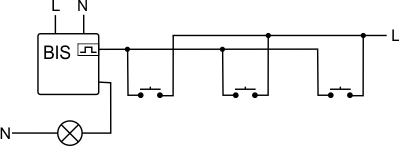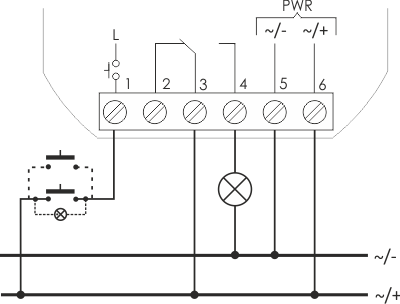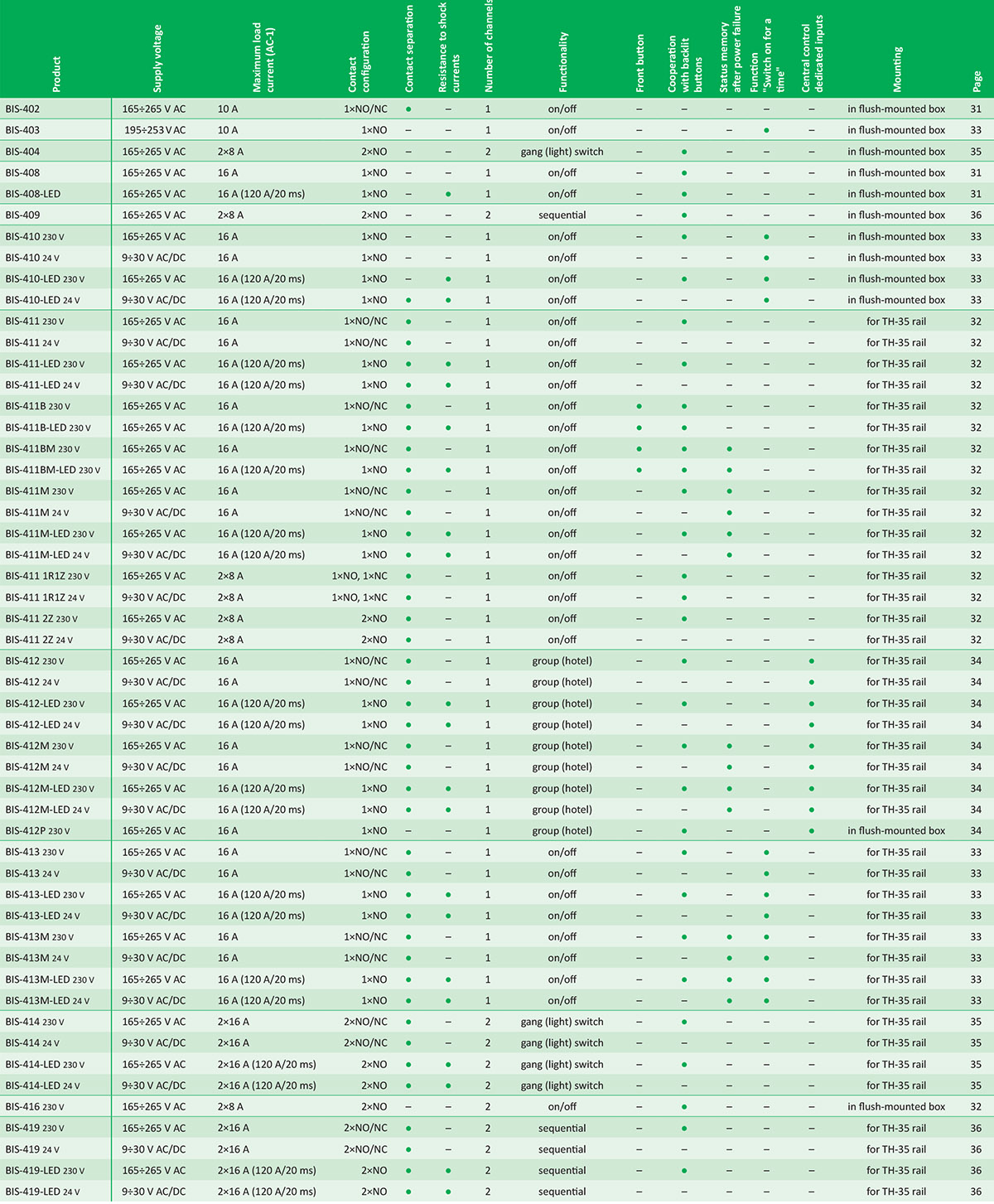


Electronic bistable impulse relay allows switching of lighting or other equipment from several different points of using the control buttons are connected in parallel.
Relay version "i" is to pin adapted to cooperate with the receivers with high starting current, such as LED fluorescent lamps, ESL fluorescent lamps, electronic transformers, discharge lamps, etc.
With switch off timer. Power supply 24 V AC. Maximum load 16 A (160 A/20 ms). To under plaster box Ø60.

Functioning
The receiver is followed by current pulse triggered by pressing any (bell) connected to the relay. Turning off the receiver will be the next pulse or automatically turn off after a preset time. Longer duration (minimum 2 seconds) pressing the relay instantaneous permanently. It will cut out after a momentary button is pressed again (or after a power failure).

Power table

The above data are indicative and will depend to a large extent on the design of a specific receiver (especially for LED bulbs, energy saving lamps, electronic transformers and pulse power supplies), switching frequency and working conditions.

